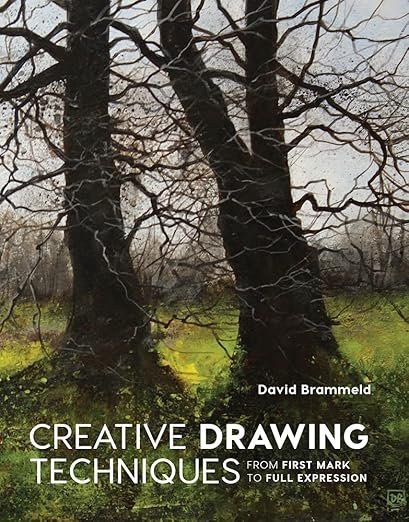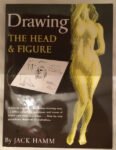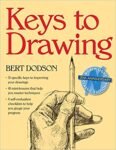This is a 176-page paperback and one of three books on figure drawing that I…

Creative Drawing Techniques, David Brammeld – Book Review
Time for another book review. Once again, a book whose price suddenly dipped on Amazon and tempted me to click on it. This one’s been on my wishlist for a while and has been a bit up and down over the years. Just recently, because I’ve been “drawing” so much with soft pastels and oil pastels, it’s been near the top of my list.
It’s a 176 page paperback, issued by Crowood but it’s A4 size rather than the slightly smaller size of the Liz Chaderton books. It feels quite text heavy and did take me a while to get through.
After a brief intro, we have :
- 20 pages on getting started: some pretty basic tips and stuff on the most basic equipment (pencil and paper)
- about 20 pages on the language of drawing: line, tone, perspective, scale, composition, etc. Discussion of composition went no further than the rule of thirds, which felt like a missed opportunity.
- 20 pages on developing your style which felt to me like not much more than fluff
- about 10 pages on choosing a subject, again quite fluffy, nothing much more than deciding whether to do a portrait, a figure or a natural or urban landscape
- about 10 pages on drawing from life or from a photograph, again very light. I’m beginning to spot a pattern.
- about 5 pages on developing a drawing, light on content
- about 20 pages on dry media, a quick description of lots of different media and what they bring to the party. The most useful chapter so far, more about choosing a medium than tips on how to use it
- about 15 pages on wet media, again mainly about what different media bring to the party but with a bit more time spent on pen and ink (including tips) which is clearly one of David’s favourites
- we’ve had plenty of demos so far but next is a 35 page chapter with more demos
- and then a short chapter of about five pages on storing and framing work
As I said, there are lots of demos throughout the book. They’re all worded as demonstrations rather than as instructional knitting patterns, which I like. I also liked the humility that David showed in being the worst critic of his completed (or often half completed) works. What I didn’t like about the demos was that too many of them were accompanied by photos with no indication of which step of the process they were showing. And when the number of photos is different to the number of steps in the process, that’s not a great look.
The subjects of the demos included lots of interesting looking dilapidated buildings and doorways but also a huge number of bare trees. I was sick of bare trees by the time I finished this book. I was especially frustrated about there being no tips in the book on how to draw bare trees beyond painting what you see and/or just letting go. Media-wise, there was a lot of mixed media work going on, adding watercolour over ink or pencil, oil pastels over watercolour, that sort of thing. None of it especially appealed to me but other readers might be more interested. And it set my teeth in edge every time he drew something on cartridge paper, only to go over it with watercolour which doesn’t look good on that surface.
At the end of the book I’m feeling on the one hand exhausted after making my way through a heavy tome and on the other hand frustrated at having learned nothing: this is a book that I didn’t make notes on. I know what David likes to draw and in what medium and have a vague idea of his on-the-fly experimental approach but that’s all. His artwork is great on the eye but I need more than that, otherwise I’d be buying coffee table books of paintings by my favourite artists.
If this sounds like the sort of book you’re after then, head out and buy a copy. I don’t know, maybe you’re a mixed media artist. But then again I’m sure there must be better mixed media books out there. It’s not for me though. I shouldn’t have bought this one. Sorry David.
🎨
You can find this book and more reviews of it at Amazon UK here. As an Amazon Associate, I earn commission from qualifying purchases but this costs absolutely nothing extra to you.








Leave a Reply